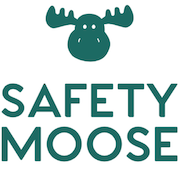In 2022, the Thai Ministry of Labour updated the Occupational Safety & Health Act of 2011. In particular, it made changes to the classification of businesses requiring certain types of safety officers.
Under the previous Occupational Safety and Health (OSH) Act 2006 and 2011, the Ministry of Labour and Welfare classified industries into 14 distinct categories. The revised legislation has reclassified these categories into three risk-based levels, based on the potential for serious incidents.
Level 1, which encompasses high risk industries such as petroleum and large mining operations, traditionally has a large workforce and well-established occupational safety and health systems.
Level 2, which covers a broader range of 49 industries and is considered to have a medium level of risk, includes hospitality and trade/exhibition centers with more than 50 employees.
Level 3 encompasses low-risk industries, primarily office-based jobs, as well as live music venues, sports and recreational centers, movie theaters, and others.
In each of these listed industries, a more robust safety management system must be implemented for companies with over 50 workers.

Safety Officers in a Managerial Level
At least one Manager (ideally a senior manager or Board Member) must be trained and certified in this course. It is a 12 hour course with 3 core subjects and is normally completed over a two day period in a training room. The core subjects cover Health & Safety Laws and Regulations as well as information on what your company’s safety management system should consist of, to be compliant. It is basically a review of Thailand’s OSH Act of 2011 and the 2022 update to the law.
Safety Officers at a Professional Level
A Safety Officer at a Professional Level, is defined as “an employee who has the duty to operate on safety issues of the company/business”. This would apply to your HSE Manager or whomever has full-time responsibility for safety and health.
The training consists of 3 courses lasting a total of 42 hours. It focusses on risk management, the development of safety plans/procedures (safety management systems), auditing of those plans (and systems) and a course on occupational health assessments (noise & lighting in particular). In order to be admitted to this course, the applicants may have to prove competency and experience as a career safety and health professional.
As of 2022, a person with an advanced degree or diploma on Health & Safety Management automatically meets the requirements of Safety Officer in a Professional Level.
Safety Officers in an Advanced Level
The applicant must pass a 180 hour course with 6 course topics. This includes more advanced courses on Occupational Safety and Health law, plus courses on Environmental and Industrial Hygiene; Safety Engineering; Ergonomics and Technology and Health care of employees (i.e. health surveillance and others).
Safety Officers in a Technical Level
A Safety Officer at a Technical Level is considered as “an employee who has qualifications and has received training as specified by law”. It’s not clear what a “technical level” means but I am assuming (possibly wrongly) that this is a person with a particular technical skill in construction and manufacturing that is higher than that of a Supervisor. The course curriculum appears to be exactly the same as the Safety Officer in a Supervisory Role.
A “technical-level safety officer” is required by law to operate on safety issues no less than 1 hour per. Presumably this means some activity related to safety and health, such as hazard walks or site safety inspections. These would need to be well documented to be certain of compliance.
Safety Officers in a Supervisory Level
According to the Law, this person “is an employee who is in charge of supervising, controlling, commanding, and ordering other employees to work within the scope of responsibility of each working unit”. All of your Supervisors and/or Team Leaders in each work unit must take and pass this course

